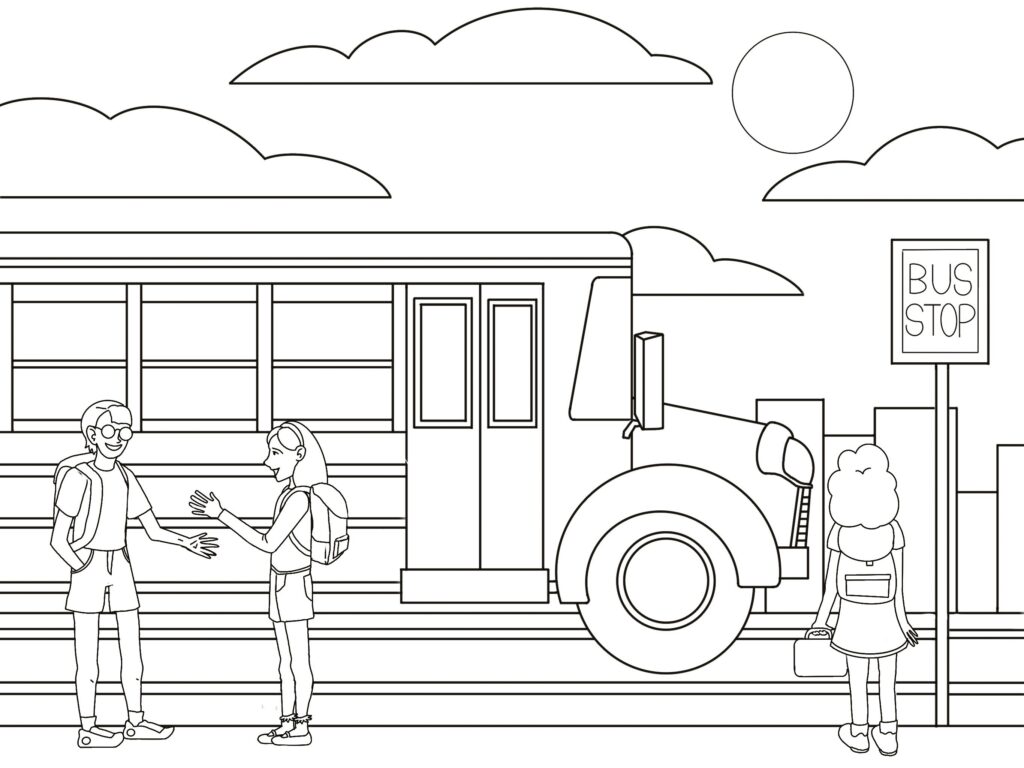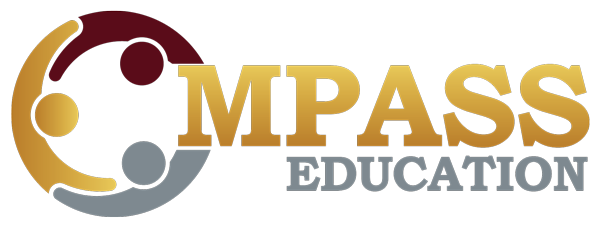Challenge your students problem solving skills and communication and reasoning with these math questions related to bus routes and daily commutes.
Kindergarten – 2nd Grade:
Ask your students to color the image. Then use the image to answer each question

1. There are 7 people on the bus. If 3 more people get onto the bus, then how many people are on the bus altogether?
2. Two people set in each seat on Abe’s bus. There are a total of 10 seats on the bus. How many total people ride Abe’s bus?
3. Kevin is the first person to get on the bus each morning. He gets on the bus at 7:30 am. The bus arrives at school at 8:00 am. How many minutes does Kevin ride the bus in the morning? Use words and numbers to support your answer.
3rd – 5th Grade:
1. Jen gets on her bus when there are 12 people on the bus. There are 8 people at Jen’s bus stop (including Jen). There is a total of 34 people on the bus when it arrives at the school. How many people get on the bus after Jen’s bus stop? Use words and numbers to support your answer.
2. Sam needs to be at the bus stop by 7:50 am each morning and gets to school at 8:15 am. Sam gets on the bus afterschool at 2:40 and gets off the bus at 2:50 pm. What is the total time Sam is on the bus? Use words and numbers to support your answer.
3. Ron rides a bus that has a total of 42 students on it. There are a total of 24 seats on the bus. What is the maximum number of students that have a seat to themselves? Use words and numbers to support your answer.
6th – 8th Grade:
1. Nia lives 0.5 mile from the school. Her bus ride takes 35 minutes, due to the stops. Nia walks an average of 3 miles per hour. Nia claims that it is faster for her to walk to school than to ride the bus. Do you agree or disagree with Nia’s claim? Justify your decision.
2. Michael is the first person to get on the bus each morning and the last person to get off the bus each afternoon. Michael claims that this is not fair and that running the route in the same order morning and afternoon would make all students ride the bus for the same length of time. Michale lives 4.2 miles from the school. The bus route is 6.5 miles with all the stops. It cost 20¢ per mile to operate the bus. How much more would it cost the school to begin the afternoon route by starting at Michael’s house rather than driving the route in reverse order? Justify your answer.
3. The average cost of a standard school bus is $180,000. The average number of years to use a school bus is 13.5 years. Assume 360 daily 1-way routes per year with 52 students on the bus during each route. What is the average cost per student to ride the bus for 1 year? Justify your answer.
High School:
Table 1 provides the preferred commute to and from school of 4 high school students.
1. April claims that riding her bike is faster than riding the bus. Do you agree or disagree with April’s claim? Justify your decision.
2. If Greg and Stephen both use the other commute option and leave their house at the same time, who would get to school first? Justify your answer.
3. Which student saves the most time by using their other commute option rather than ride the bus? Justify your answer.

